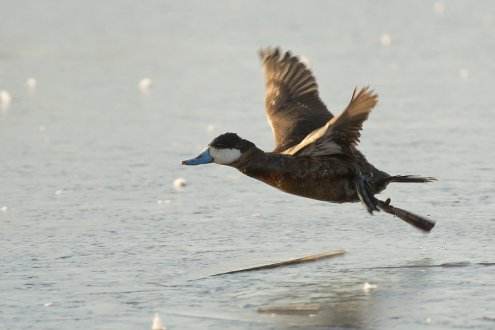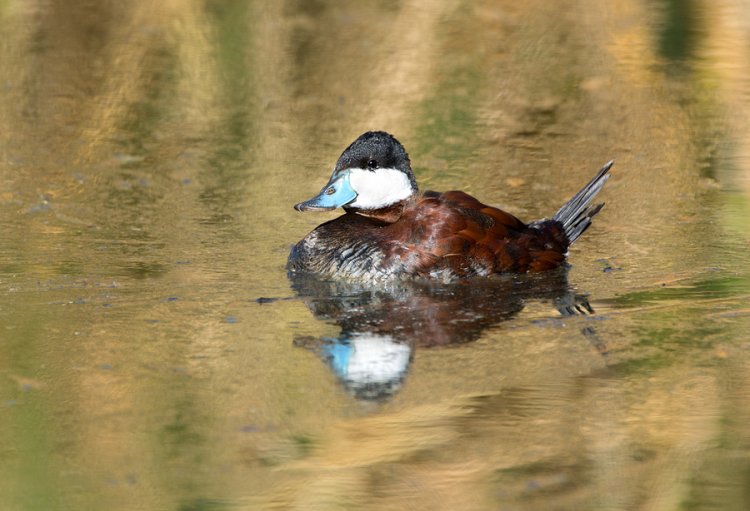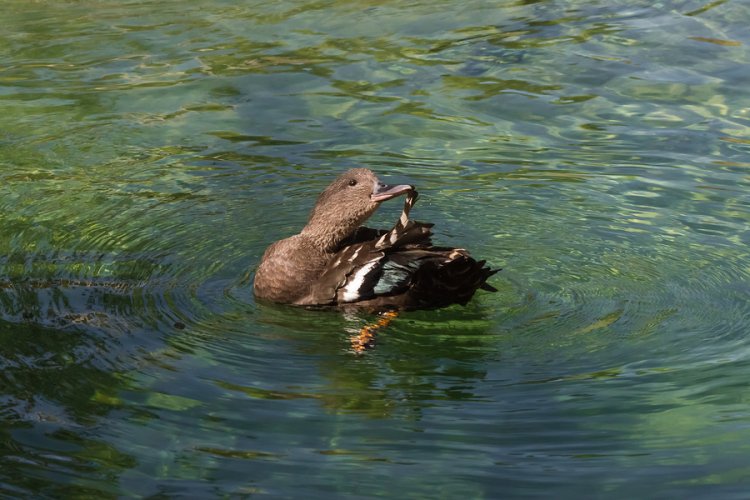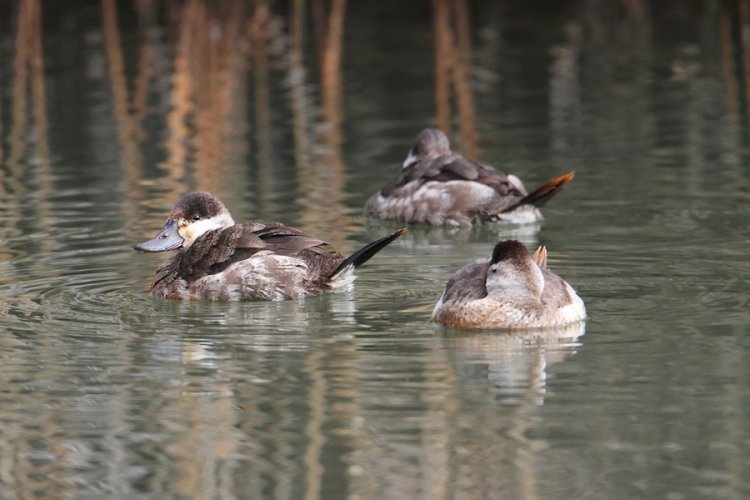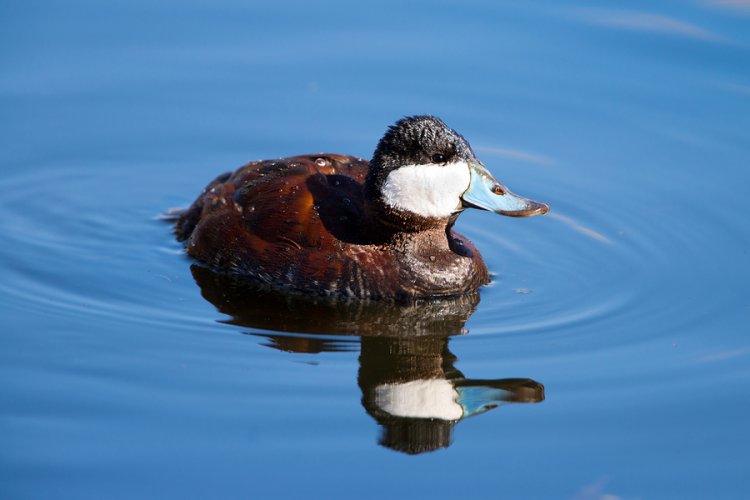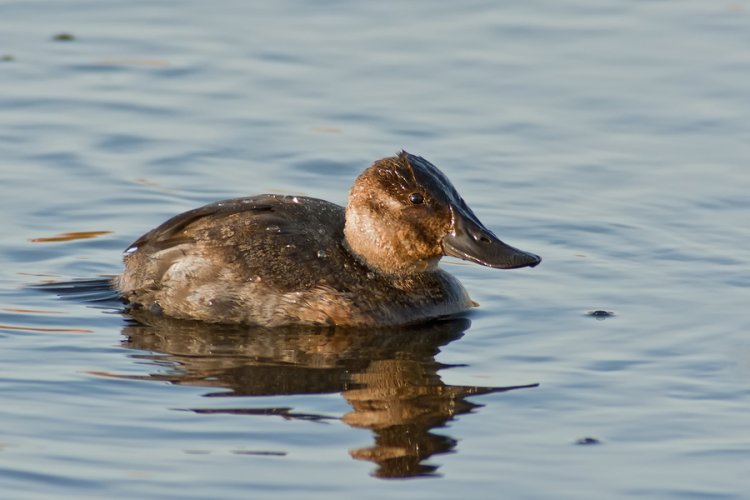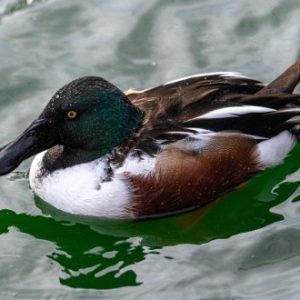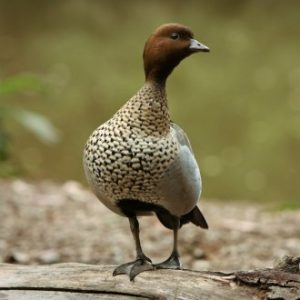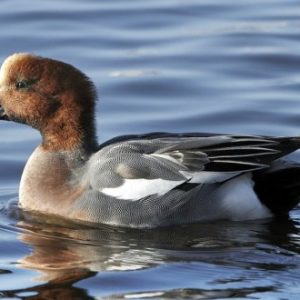Oxyura jamaicensis
North American Ruddy Ducks are stout, large-headed, and thick-necked little ducks. They are very striking in appearance, with large and stiff tails that are held upright and fanned forward. Males in breeding plumage are boldly colored, with a bright sky-blue bill, glowing white cheek patch, and gleaming reddish-chestnut body. Males court females by beating their bills against their necks, creating a swirl of foaming bubbles in the water. The Ruddy Duck is not recommended for a beginner in raising waterfowl.
Range: The range of the North American Ruddy Duck is very widespread. They breed and summer mostly in the prairie waters and marshes of the western United States and Canada, and typically winter in the wetlands of the Southern United States and Mexico.
Habitat: North American Ruddy Ducks mostly nest in marshes in the vicinity of lakes, reservoirs, and large ponds. During migration, they can often be found in large lakes and rivers and frequently mixing with other breeds of diving ducks.
Status in the Wild: Ruddy Duck populations are considered stable across North America, although their numbers recently have been in decline. This could be due to pollution or the draining of the shallow marshes where they like to nest and breed. In general, this species is not popular with hunters.
Status in Aviculture: For a wild duck, the North American Ruddy Duck is quite tame and friendly. Although Ruddy Ducks are quite unusual specimens in aviculture, they do well in captivity. They usually get along well with other duck species, although they can be aggressive during breeding season.
Breeding: Ruddy Ducks lay very large eggs, the largest eggs of all ducks relative to body size, in creamy white. These big eggs usually hatch into robust ducklings that are independent and hardy from day one. Nesting sites are chosen by the female and are elaborately constructed, usually placed between 2–10 inches over the water and supported by cattails or grasses. The nest can also involve a canopy of vegetation over the top and is well concealed with additional vegetation. Clutch Size can be from three to 13 eggs with an incubation period of 20-26 days.
Lifespan: Ruddy Ducks can reach ages over 10 years old with good husbandry.
Size: These are small and compact ducks; adults weigh about 1.3 pounds, with an overall length of 14-16 inches.
Housing Requirements: North American Ruddy Ducks are diving ducks and require a body of water for their active swimming. Water should be deep enough for diving. These ducks spend most of their time in the water swimming and diving. These ducks not only dive but also can slowly sink, almost in slow motion, beneath the surface of the water. When disturbed or startled, Ruddy Ducks will usually dive and swim away underwater rather than fly. They would do well with natural pond settings. Their feet are placed very far under the body and are not designed for walking or running on land. If they are to come out of the water, provide a low sloped exit for them. Be sure that the enclosure is safe from predators and that it is netted or covered, so your ducks cannot fly away.
Diet: Ruddy Ducks dive to feed on aquatic invertebrates, especially midge larvae. Their main method for feeding is by straining. Although they do sometimes strain food from the water surface, they mostly forage at the bottom of shallow water sources, taking up mouthfuls of mud and straining it through the thin plates on their bills, swallowing any food items that get strained out. Their diet during breeding season is very high in vegetable matter in the wild so a captive diet should be sure to provide some greens such as duckweed. Ruddy Ducks are most active at night and do most of their feeding at nighttime. They sleep mostly during the day. A quality commercial duck diet with access to a natural pond or marshy environment would make a very solid feeding plan.

